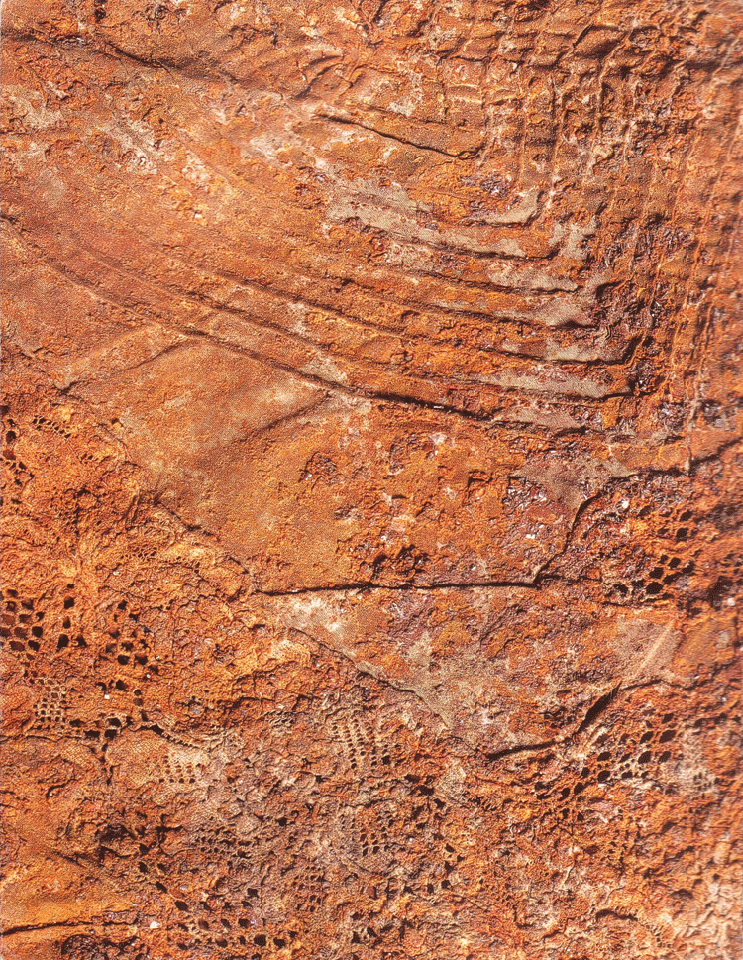Here are close up photos of my final garments work in progress. I loved how my original heat transfer experiment turned out and decided to take this onto my designs. I mixed these rusted, earthy colours with orange, red, green and yellow. I used a paintbrush to drip and 'throw' paint to create the unplanned 'patina' style pattern. I am so pleased with how it turned out, I think it really represents the concept of Wabi Sabi.
I tried to replicate the striped pattern I saw not the tree in Sheen Common with fabric paints, I used some metallic paint (gold) to bring a 'luxury' contrast to a jacket that looked very unorganised and distressed. I added a lining to neaten the inside, and frayed most of the edges of the garment. Although it looks messy and unplanned, the fraying alone meant a line of zig zag stitching to stop the fray from going to far, so every 'accidental' detail was originally planned. So when I cut off the frayed edge at the back of the jacket my mistake I realised that the whole point of Wabi Sabi was embracing the imperfections and mistakes, this little error become hugely important to me as part of the garment, as it further portrayed the Wabi Sabi concept I was striving for.
Close up of weaving and felting.
For my third garment I made a floor length shredded cotton muslin dress, I wanted it to look delicate and a lot like the cobwebs I had studied in my initial research. I also felted over the fabric to give a 'mouldy' look.
I shredded and ripped up the fabric for the hem, an 'unfinished' looking detail. As if it had been neglected and worn over time.









































.jpg)

